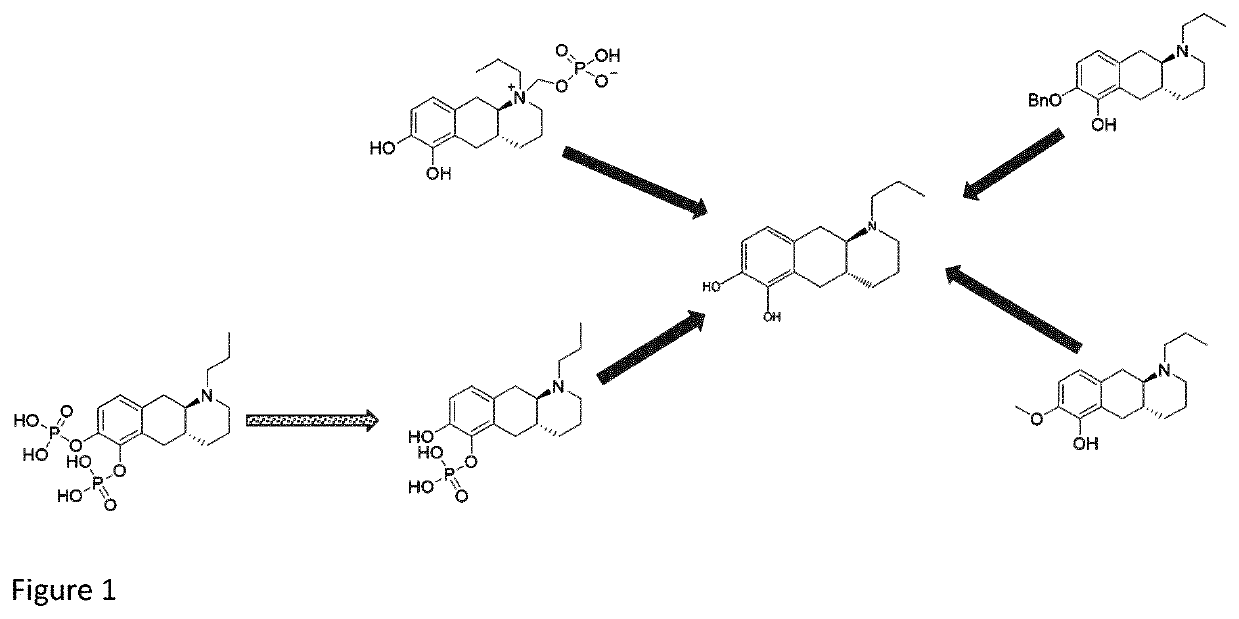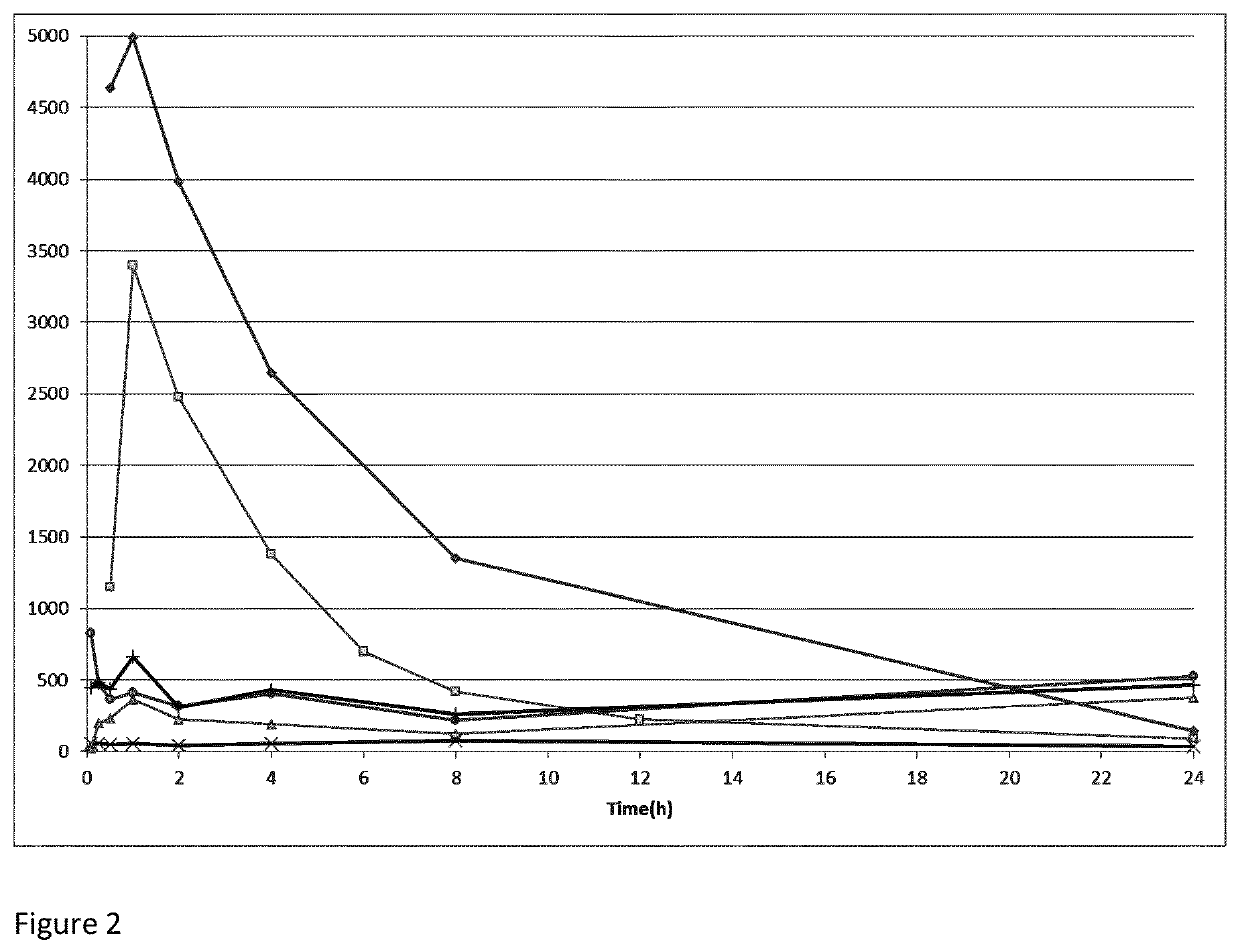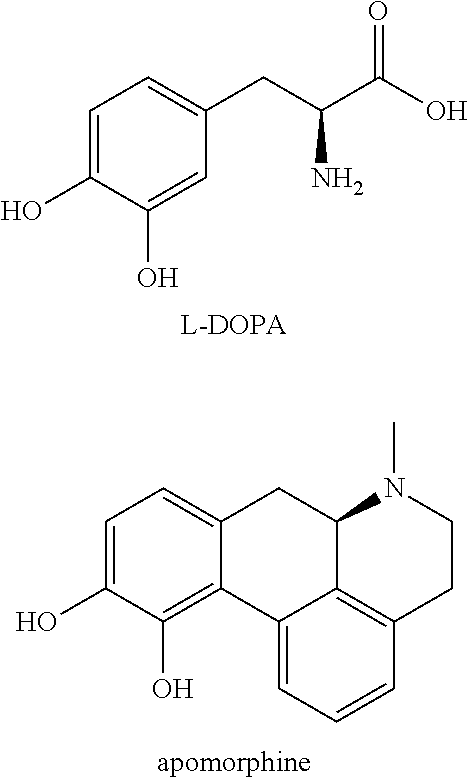New catecholamine prodrugs for use in the treatment of parkinson's disease
a technology of catecholamine and parkinson's disease, which is applied in the field of new catecholamine prodrugs for use in the treatment of parkinson's disease, can solve the problems of poor pharmacokinetic profile, inability to predict the conversion to the parent compound in humans, and inability to achieve clinical use for the treatment of pd, etc., to improve the minimal brain dysfunction (mbd), improve the effect of dopaminergic turnover and positive
- Summary
- Abstract
- Description
- Claims
- Application Information
AI Technical Summary
Benefits of technology
Problems solved by technology
Method used
Image
Examples
example 1
n of Compounds in Human Plasma and Hepatocytes
example 1a
of Compounds of the Invention in Human Plasma
[0293]Frozen human plasma was thawed and then centrifuged at 3200×g for 5 minutes to remove debris. The pH value of the supernatant was then measured and adjusted to 7.4±0.1 by adding 1% phosphoric acid or 1 N sodium hydroxide. 2 μL of dosing solution (50 μM for test compounds and 100 μM for positive control (propantheline bromide)) was mixed with 98 μL of blank plasma to achieve 1 μM test compound and 2 μM positive control of final concentration. The mixture was incubated, and samples were withdrawn from the incubations at the pre-determined time points of 0, 0.5, 1, 2, 4 and 6 hours (in duplicate) at 37° C. in water bath. At each corresponding time point 10 μL inhibitor and 20 μL ascorbic acid and 2 μL formic acid (20%) are added, and then added 400 μL of “stop solution” (200 ng / mL tolbutamide plus 200 ng / mL labetalol in 50% ACN / MeOH) to precipitate protein. The substance was mixed thoroughly and thereafter centrifugated at 4,000 rpm fo...
example 1b
of Compounds of the Invention in Human Hepatocytes
[0294]Incubations were conducted in 96-well plates at 1 μM compound concentration in duplicate. The hepatocyte cell concentration was 0.5×106 cells / mL used for final incubation at 37° C. in an incubator of 5% CO2 95% relative humidity. The medium control samples were included at 0 and 60 minutes in the absence of cells. The total organic concentration was 1% (DMSO 0.1%) in the final incubation. The controls, (7-ethoxycoumarin and 7-hydroxycoumarin) was incubated parallel at 3 μM. 2 μL of dosing solution (50 μM for test compounds and 100 μM for positive control) was mixed with 98 μL of 100 mM PBS to achieve 1 μM test compound and 2 μM positive control of final concentration. The mixture was incubated, and samples were withdrawn from the incubations at pre-determined time points of 0, 0.5, 1, 2, 4 and 6 hours (in duplicate) at 37° C. in water bath. To each sample, 10 μL inhibitor and 20 μL ascorbic acid and 2 μL formic acid (20%) were ...
PUM
| Property | Measurement | Unit |
|---|---|---|
| temperature | aaaaa | aaaaa |
| temperature | aaaaa | aaaaa |
| temperature | aaaaa | aaaaa |
Abstract
Description
Claims
Application Information
 Login to View More
Login to View More - R&D
- Intellectual Property
- Life Sciences
- Materials
- Tech Scout
- Unparalleled Data Quality
- Higher Quality Content
- 60% Fewer Hallucinations
Browse by: Latest US Patents, China's latest patents, Technical Efficacy Thesaurus, Application Domain, Technology Topic, Popular Technical Reports.
© 2025 PatSnap. All rights reserved.Legal|Privacy policy|Modern Slavery Act Transparency Statement|Sitemap|About US| Contact US: help@patsnap.com



